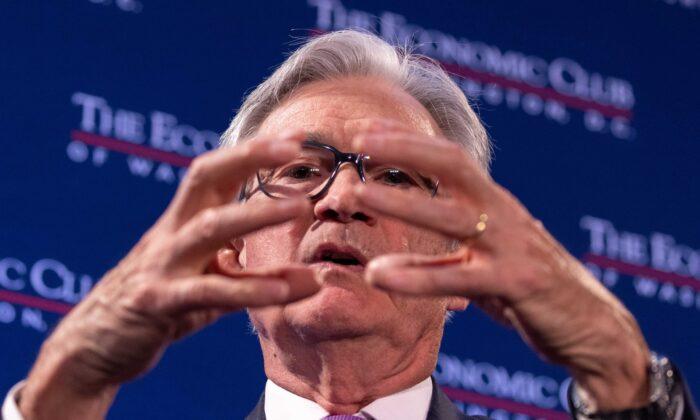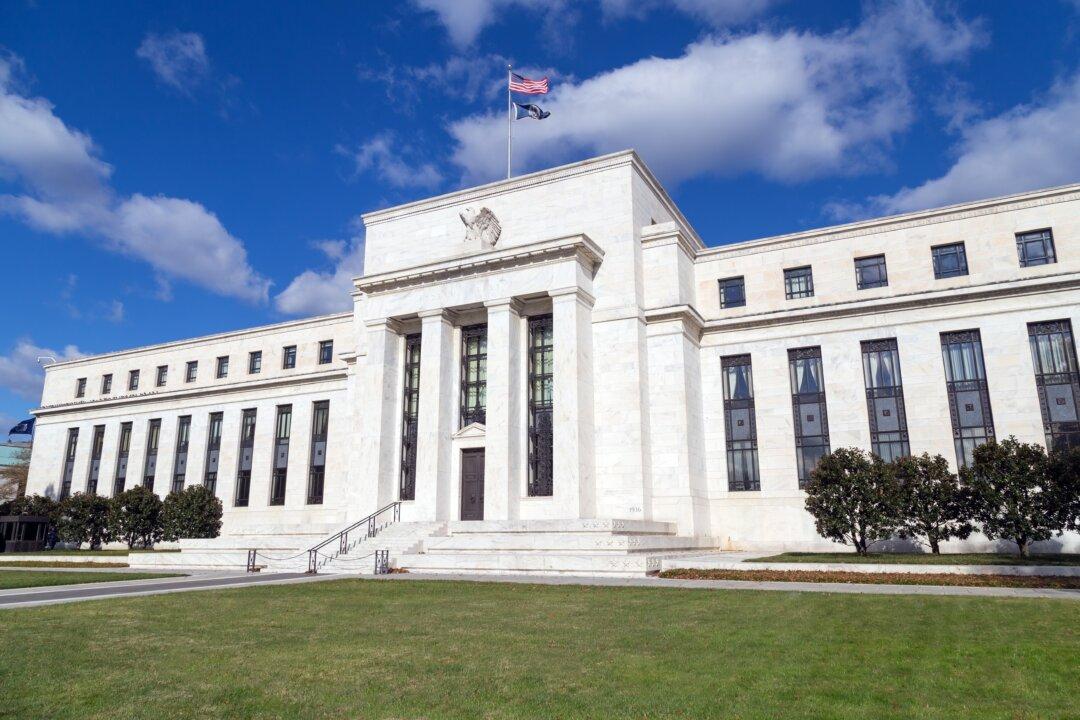Jerome Powell came to power at the Federal Reserve with the determination to reverse the astounding errors of previous chairmen, most especially Ben Bernanke, who received the Nobel Prize for the dumbest central-bank policies since the Weimar Republic. In 2008, Bernanke pushed borrowing costs for banks to zero and held them there for years on end.
The policy was always absurd. Why can’t interest rates be zero? Because there is such a thing as the passage of time. Consuming in the present with resources stored up by others must always come at some cost. This is true whether money exists or not.
A super-simple example: Let’s say your bushel of blueberries costs me one egg today but I won’t have an egg until next week. The blueberries will cost two eggs next week. Why? Because consuming now and paying in the future always comes at a cost to the borrower and to the advantage of the lender. The lender can grant me charity, but that doesn’t take away the price of time.
The entire yield curve as we know it today is nothing but an elaboration on that simple example. In normal times and normal assumptions, the longer the period of maturity, the higher the rate. But even at the shortest maturity term, the rate in a normally functioning market is always positive.
So for Bernanke to force a situation in which the passage of time costs nothing and is even negative is equivalent to manufacturing heaven on earth. It’s an illusion that can’t last. It also introduced horrible distortions into the production structure. Money and capital seeking return left the present and chased the future, which is why Big Tech and Big Media ballooned out of control, sucking away vast resources from plain savings, small business, retail, and other such normal things.
Powell knew the danger in that policy, so he set out to reverse it in 2019. He was making a bit of progress, hoping to normalize market signals and get the production structure back on a rational track, but then came the pandemic, and Congress went bonkers with spending. He stepped up and provided liquidity to the tune of $6.2 trillion in newly printed money.
Realizing the mistake, and trying to grapple with the inevitable price inflation, Powell reversed course. His only choice was to be ferocious about it. He embarked on the highest and fastest rate increases on record. Those rates bled very quickly through the yield curve and all U.S. Treasurys were repriced.
Such a move always introduces a problem for the holders of old bonds bearing fixed rates. They necessarily trade at a discount. Any holders of them will certainly have a problem that the value of the bond portfolio will be devalued.
And who held them? Many large banks. And why? There are two reasons. First, the tsunami of money that flooded the world from 2020 to 2021 ultimately lands in the banks. Normally, the banks would flip that to loans but that wasn’t viable at this scale. Second, government regulations after 2008 directed banks to put spare cash not into securities or other instruments of some risk but rather “safe” government bonds.
Banks complied. In the past six months, with the new Fed policies, smart risk managers began to offload the devalued bonds at a discount. But not all did. Silicon Valley Bank was apparently so caught up in ESG [environmental, social, and governance], DEI [diversity, equity, and inclusion], and LGBT stuff that they completely neglected banking basics, if they knew them at all. After all, holding underwater bonds is one of the leading causes of bank failures.
The right policy, the obvious answer, and the path any rational central banker should choose at this point is: Let the failure take place. The liquidation would have happened, the assets sold, and depositors would have been paid off at 50 to 70 cents on the dollar for all uninsured deposits. There is absolutely no reason in the world why that shouldn’t have happened. As of March 12, that’s what everyone believed would happen.
But here, the Biden administration intervened in ways that are probably displeasing to Powell. The Treasury Department, completely without justification, promised another heaven on earth. It would bail out every last depositor completely. With that one action, the United States has now embarked on an even more dangerous course. It has granted full reserves to every single bank deposit, no matter what.
Bank failures are normally deflationary in their effect. But with unthinkably large de facto bailouts of banks, we have a prescription here for the opposite. Treasury Secretary Janet Yellen says that taxpayers aren’t on the hook but there are other ways to pay taxes besides through government revenue. You can also pay with more devaluation of the currency.
If the United States keeps going with this policy, we will have the worst of both worlds. Rates will continue to rise, while the central bank will keep pouring money into the system to keep it afloat with ever more quantitative easing. One force cancels out the other force in a succession of disasters until we reach the final endgame of a hyperinflationary crack-up boom.
This wicked little move might buy the Biden administration more time and put a damper on the possibility of contagion for now. But in the long term, this policy threatens to cause even more damage than the zero rates of 2008 and the monetary stimulus of 2020–21. It’s an offering of eternal paper-money welfare for the entirety of the woke ruling class. And here we get to the core problem of the Fed itself. In the end, its main job is fixing the problems it caused in order to save the banking system. It will always be forced to do that over the preservation of the underlying soundness of the money.
The tragedy here runs deep and wide. The powers that be are engaged in so many errors that it’s getting beyond the point of being fixable. Not even the best president in a perfect four years will be in a position to reverse all this wreckage. The lockdowns of 2020 were certainly the turning point but even then, allowing the system to liquidate itself without intervention could have possibly righted the ship in time. But on the present course, there is nothing but wreckage ahead.





